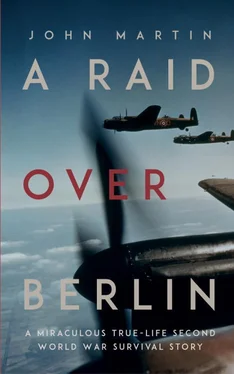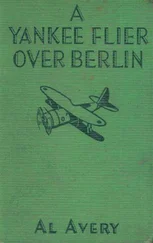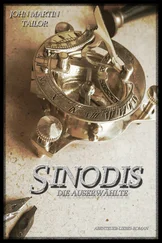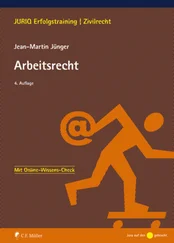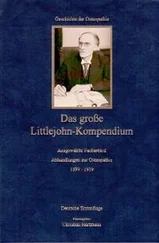While waiting patiently in yet another siding, it could be seen that trains passing in our direction were made up of flat platform trucks carrying field guns and lorries, while trains going in the opposite direction were mainly hospital trains. Soldiers could be seen standing at the windows, mostly with their heads bandaged, or with one or even both arms in slings, but looking quite cheerful◦– supposedly only too glad to get away from a terrible war. In other carriages the seriously wounded could be seen lying on stretchers. Although they were the enemy it was still shocking to see them in such a condition.
At some stage, towards the end of the second night, our train came to a halt and, in the growing light, the guards could be seen putting on their packs and gathering up their rifles. We had arrived.
One of the doors was slid fully open and we were ordered out. The guards, who had been considerably strengthened by a detail from the prison camp, formed us up, much as we would have been in the square-bashing days of the RAF, and marched us off.
It was not a long or arduous march, perhaps even enjoyable after the confinement of the cattle truck, but upon arriving at our destination, our spirits took a nose dive as we surveyed Stalag Luft VI.
Originally built at the start of the war near the town of Heydekrug to house Polish prisoners, it was the northernmost POW camp within the confines of the German Reich. As Nazi aggression swept Europe, POWs from France and Belgium were added, followed by Russians. June 1943 saw a new clientele made up of British and Canadian Air Force non-commissioned officers, and, from February 1944, they were joined by American airmen unfortunate enough to be captured. By July 1944 it housed nine thousand Allied airmen.
On seeing it for the first time my attention was immediately taken by the amount of barbed wire involved. It not only surrounded the Stalag entirely and very securely, but within that were separate areas known as lagers or compounds (at Stalag Luft VI there were three: A, E and K), which were just as securely fenced from each other, creating prisons within a prison.
The fences, it seemed, were erected to a standard pattern, for wherever I went they all looked alike. There was, in fact, always two fences running parallel, about twelve feet apart, and about the same in height, thickly stranded with barbed wire, with the gap between them filled entirely with coiled barbed wire. The posts were of natural, unmachined, substantial tree trunks. As would be expected, the defences extended well below ground level.
At each corner of the wired-off areas were watch towers, referred to as Posten boxes. These were platforms hoisted a further ten feet above wire on timber stilts with a roof. They provided the guards who manned them, day and night, an uninterrupted view of both sides of the fences. The guards were armed with mounted machine guns and rifles, and for night use, searchlights to supplement the overhead lighting around the wire barriers.
Perhaps twenty feet from the wire, which all the boundary fences were known as by the prisoners, and on the inside, ran the warning wire. This was quite insignificant in appearance but the strict rule, laid down by our captors, was if any prisoner so much as touched it, they would be considered as attempting to escape and shot without further warning. This rule had to be accepted, and no one in their right mind would ever put it to the test.
When I look back, in my old age, I realise how easy it would have been for a prisoner to accidentally fall on to that low to the ground warning wire, for just inside of it, around the entire boundary of each compound, was a well-trodden path known as the circuit. This gave the longest uninterrupted walk possible, and it was very popular with most prisoners, in all weathers. Apart from the fresh air, which was so welcome after being shut up in a very crowded hut for many hours, if there was anything to discuss about RAF matters, escape plans or anything that our captors must not know about, this was the only place where there could not be any hidden microphones, or the enemy not secretly listening. It became crowded at times, especially on a fine day, and the chances of someone stumbling and accidentally touching the wire, was certainly not impossible.
*
Our party was marched from the main gate through several internal, but no less well guarded gates, to E Lager, which was very obviously newly opened and almost entirely occupied by American airmen. We were then herded into a large and, for a short time only, not overcrowded hut. There were no Americans in this hut but although we were segregated by huts, we could mix with them freely otherwise, and it was to be a very interesting experience.
The Americans were friendly, helpful and interesting, but I found them a little surprising. It must be remembered that there were no transatlantic air services in my youth; even if there had been the average person of that day would not have had the leisure time or the money to use them, and the same applied to the luxury sea crossings that were available. Knowledge of Americans came from the films that were shown at the local cinemas◦– most popular before the days of television. I would say ninety-five per cent of films shown were American, so we thought we really knew all about them. Those living in the cities were all well off◦– they took their girls out to dinner driving big cars or hailed a cab by clicking a finger and thumb, and there was always one at hand, or they were cowboys. These were quite different and spent most of their time at war with the Red Indians, showing unbelievable accuracy with their six shooters and always winning. In their spare time they would demonstrate their other skill, that of lassoing cattle.
The surprise was that they were much like us; back home they did ordinary jobs to earn an ordinary living. They were perhaps, in general, a bit more extrovert, especially when playing sports. We soon learned to play softball with them and had to get used to what we thought was the ungentlemanly barracking that went on, to try to put the striker off his game.
It was not long before American airmen were wearing RAF battledress blouses and vice versa. I did not swap mine as I thought the RAF ones looked warmer and more suitable for the bitter cold Baltic weather.
On the subject of clothing, heavy, warm clothing was an absolute necessity for all the crew of a Lancaster flying at high altitudes, except for the wireless operator. This was due, in my humble opinion, to a fault in an otherwise very well-designed aircraft, namely the heating system. Hot air was ducted from one of the engines on the port side to enter the aircraft close to the wireless operator’s feet, but there was no provision for the distribution of the heat once inside the aircraft. The navigator, who sat very close to me, got very little benefit from the system and the pilot, engineer and bomb aimer, none at all. It was designed so the two gunners had to rely on their electrically heated clothing, which was inadequate for the temperatures often encountered, while the heat being poured in at the wireless operator’s feet was sometimes almost unbearable and could lead him into a dangerous complacency as he dressed accordingly. He would wear only his ordinary battledress uniform, and over that the essential safety equipment. A May West life jacket and parachute harness of course had to be worn. A flying helmet was always worn because it contained the oxygen mask, earphones and microphone. Flying boots were worn as a protection from the uncomfortable heat, not the cold.
We had been reminded and warned of complacency by our Wing Commander at the briefing for our raid. When referring to the general details he said, ‘And you wireless operators take note◦– you might think you will always be snug and warm in your position, but if you get a bit of Perspex knocked out, you will know all about it. At least take your white sweater with you…’ which I did, ‘…even if you do not wear it, take it with you and stow it where you can get at it quickly’.
Читать дальше
